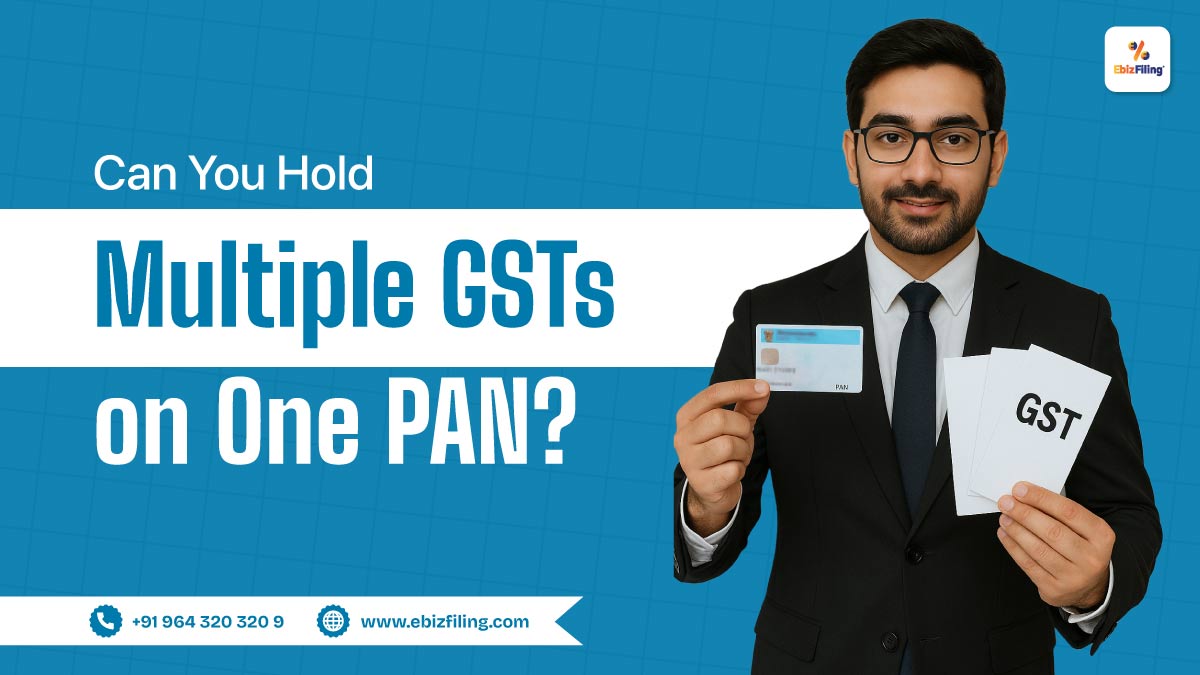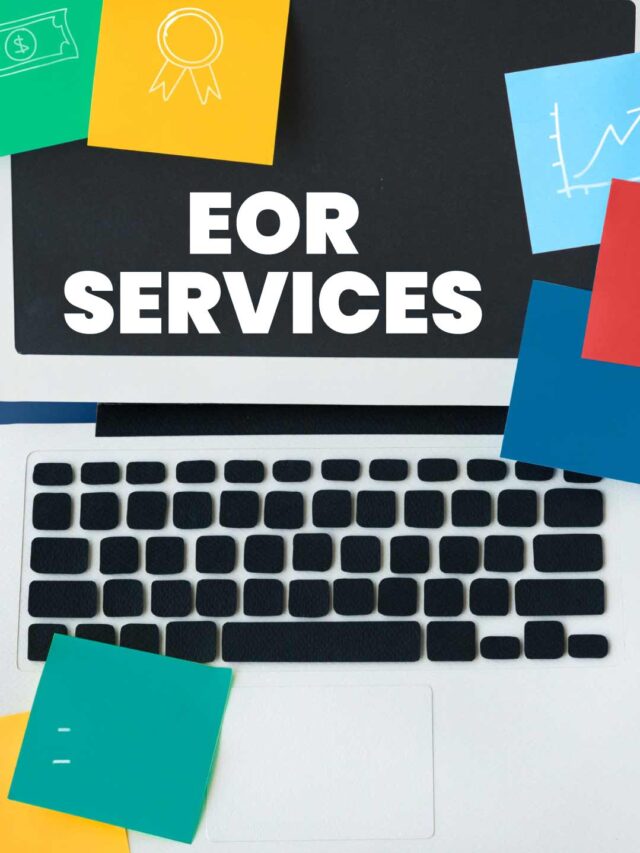
Can We Register 2 GST Numbers Under 1 PAN Card in India?
Introduction
If you are managing more than one business or operating in different states, you might wonder: Can we register 2 GST numbers under 1 PAN card in India? This is a common question for entrepreneurs planning business expansion, e-commerce setups, or a state-wide presence. The answer is yes. Under GST law, a business can hold multiple GST registrations under one PAN, either for different states or for distinct verticals within the same state.
What Is GST Registration and How Is It Linked to PAN?
- GST registration is a legal requirement for businesses with turnover above the threshold limit or involved in interstate trade. It ensures tax compliance and enables the collection and payment of GST.
- GSTIN is a 15-digit unique number assigned to each registered business.
- It is generated using the PAN of the applicant, making GST registration PAN-based.
- The format of GSTIN:
- First two digits – State code
- Next ten digits – PAN
- Last three digits – Entity and check code
- For official reference: GST Portal
Can You Register 2 GST Numbers Under 1 PAN Card in India?
Yes, legally you can. The Central Goods and Services Tax Act, 2017 allows for:
1. Different States or Union Territories
If your business operates in more than one state or union territory, separate GST registration is mandatory in each such location, even if operating under a single PAN.
2. Same State – Distinct Business Verticals
- You can obtain more than one GSTIN within the same state if:
- You operate distinct verticals (e.g., garment retail and food services)
- Each has independent books of accounts
- You comply with Rule 11 of the CGST Rules
- Note: Merely having different product lines or branches is not enough unless they are separate business verticals with clear financial demarcation.
What Is the Process to Apply for Multiple GSTINs Under One PAN?
For Different States:
- Visit www.gst.gov.in
- Click on ‘New Registration’
- Select the respective state/UT
- Enter PAN, email, and mobile number
- Verify via OTP
- Fill out business details and upload required documents
- Submit the application and obtain ARN
- Receive GSTIN after verification by GST officer
For Same State – Different Business Verticals:
- Log in to existing GST account
- File Form GST REG-01
- Choose “Reason for Registration – Business vertical”
- Submit separate books of accounts for each vertical
- Provide supporting documents and financial separation
- Department reviews and issues additional GSTIN if justified
What Are the Documents Required?
- PAN card of the business/applicant
- Aadhaar card of proprietor/partners/directors
- Address proof for each business location
- Rent agreement or utility bill (if rented premises)
- Bank account details (cancelled cheque or passbook)
- Constitution documents: Partnership Deed / Certificate of Incorporation / LLP Agreement
- Authorization letter / Board Resolution (in case of companies)
What Are the Benefits of Registering 2 GST Numbers Under 1 PAN?
- Clear Tax Segregation: Helps separate accounting and reporting for each business.
- Regulatory Compliance: Ensures each location or vertical complies independently.
- Eligibility for Local Benefits: Businesses can claim local state incentives or schemes.
- Operational Flexibility: Better management across locations or services.
- Ease of Audit: Easier for authorities to track activity per GSTIN.
What Are the Challenges You May Face?
- Increased Compliance Burden: Each GSTIN requires separate returns, invoicing, and audit trail.
- Separate Accounting Records: Must maintain individual books per vertical or state.
- Administrative Cost: Professional charges and internal management effort increase.
- Risk of Penalty: Mistakes in one GSTIN can lead to scrutiny or penalties.
What Happens If You Don’t Register Separately When Required?
| Situation | Consequence |
|---|---|
| Operating in another state without GSTIN | Non-compliance attracts penalty under Section 122 |
| Not registering distinct verticals | Mixed turnover, potential audit flags, and penalties |
| Using same GSTIN for all branches | Violates GST structure, liable to pay fine |
Real-Life Example
A Mumbai-based retail business starts a new store in Gujarat. Since GST is state-specific, the business must apply for a new GSTIN in Gujarat, even if operating under the same PAN. This helps them:
- File state-specific returns
- Claim input tax credit locally
- Manage state compliance independently
What Does the Law Say?
- Section 25(1), CGST Act, 2017 – Separate GST registration for each state.
- Section 25(2) – Option to obtain separate GSTINs for distinct verticals within the same state.
- Rule 11, CGST Rules – Lays down the conditions for vertical registration.
- View GST Rules – CBIC Portal
When Should You Consider Multiple GST Numbers?
- Business expansion across states
- Starting different service/product verticals
- Separate warehouses or units outside the home state
- E-commerce models delivering from multiple states
- Managing branches with distinct accounting and management
How Many GSTINs Can Be Taken on One PAN?
There is no fixed limit on the number of GST registrations that can be obtained under a single PAN. As per GST law, one GSTIN per state or union territory is compulsory if a business operates in more than one location. Additionally, a business may obtain more than one GSTIN within the same state, but this is optional and permitted only for distinct business verticals. However, each such registration must be justified with proper documentation, including separate books of accounts, and a clear operational and financial separation between the verticals, in accordance with Rule 11 of the CGST Rules.
Conclusion
Yes. you can register 2 or more GST numbers under one PAN card in India. Whether you’re expanding into new states or diversifying services, GST law enables you to operate compliantly and efficiently across verticals. Just ensure that each GSTIN is managed separately, with proper books, returns, and documents.
Suggested Read :
Why GST Nil Return is Necessary?
FAQs
1. Can an individual have two GST numbers under one PAN?
Yes, if operating in multiple states or verticals.
2. Is it mandatory to register separately for each state?
Yes, GST registration is state-wise and required for each location.
3. Do I need to file returns separately for each GST number?
Yes, each GSTIN requires separate return filings.
4. Can I use one bank account for both GSTINs?
It’s advisable to maintain separate accounts for better clarity and compliance.
5. Can I run both businesses from the same premises?
Yes, but you must maintain separate books of accounts.
6. Is there a government fee for registering a second GST number?
No, GST registration is free of cost via the GST Portal.
7. What if I don’t register a second GSTIN when required?
Non-compliance may attract penalties under Section 122 of CGST Act.
8. Can I cancel one GSTIN if I stop one of the businesses?
Yes, you can voluntarily cancel a GSTIN via the portal.
9. Do I need a separate DSC for each GSTIN?
Same DSC can be used, but it needs to be linked with each GSTIN separately.
10. Will my GST numbers be linked to the same PAN?
Yes, all GSTINs are issued under the same PAN but have unique state/entity codes.
New GST Registration
Register GST no. in Simple Steps with Ebizfiling
About Ebizfiling -










December 19, 2025 By Dhruvi
GSTR-5A Explained: What It Is and Why It Matters? Introduction When people hear the word GST, they usually assume it applies only to Indian businesses. Many foreign companies believe that if they are not registered in India or do not […]
December 18, 2025 By Steffy A
Why Foreign Influencer Platforms Need OIDAR Registration? Let’s Begin Let’s begin. Foreign influencers today reach Indian audiences through apps, portals, and digital platforms, earning revenue via subscriptions, commissions, and brand campaigns. When digital services are provided to users located in […]
December 16, 2025 By Steffy A
OIDAR for Creators: GST Risks for Foreign E-Coaches Introduction Creators today reach global audiences through digital platforms, courses, and coaching programs. Many foreign e-coaches serve Indian users without understanding India’s OIDAR framework. This creates serious GST risks for creators operating […]